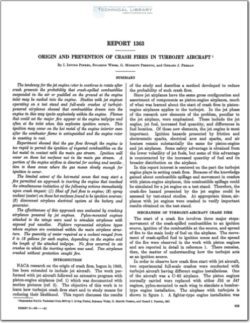NACA-Report-1363

- Version
- 177 Downloads
- 2.03 MB File Size
- 1 File Count
- December 4, 2015 Create Date
- December 4, 2015 Last Updated
National Advisory Committee for Aeronautics, Report - Origin and Prevention of Crash Fires in Turbojet Aircraft

The tendency for the jet engine rotor to continue to rotate after
crash presents the probability that crashrspilled combustibles
suspended in the air or puddled on the ground at the engine
inlet may be sucked into the engine. Studies with jet engines
operating on a test stand and jail-scale crashes of turbojet—
powered airplanes showed that combustibles drawn into the
engine in this way ignite explosively within the engine. Flames
that could set the major fire appear at the engine tailpipe and
often at the inlet when this arplosive ignition occurs. This
ignition may occur on the hot metal of the engine interior even
after the combustor flame is extinguished and the engine rotor
is coasting to rest.
Experiment showed that the gas flow through the engine is
too rapid to permit the ignition of ingested combustibles on the
hot metal in contact with the main gas stream. Ignition will
occur on those hot surfaces not in the main gas stream. A
portion of the engine airflow is diverted for cooling and ventilai
tion to these zones where the gas moves slowly enough for
ignition to occur.
The limited extent of the hot-metal zones that may start a
fire permitted an approach to inerting the engine that involved
the simultaneous initiation of the following actions immediately
upon crash impact: (1 ) Shut of juelflow to engine; (2) spray
coolant (water) on those hot surfaces found to be ignition sources;
(3) disconnect airplane electrical system at the battery and
generator.
The efiectiveness of this approach was evaluated by crashing
airplanes powered by jet engines. Pylon-mounted engines
attached to the wings were used to simulate airplanes with
exposed pod nacelles. Fighters represented airplane types
whose engines are contained within the main airplane struc-
ture. The quantity of water required as a coolant ranged from
.9 to 12 gallons for each engine, depending on the engine and
the length of the attached tailpipe. No fires occurred in sis
crashes in which the inerting system was used. Two airplanes
crashed without protection caught fire.
| File | Action |
|---|---|
| naca-report-1363.pdf | Download |

Comment On This Post